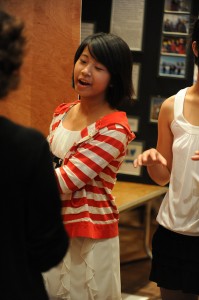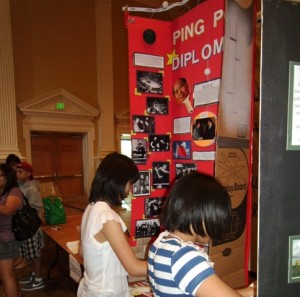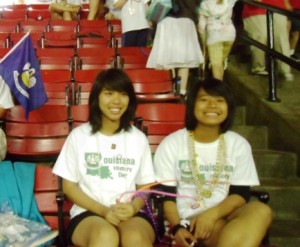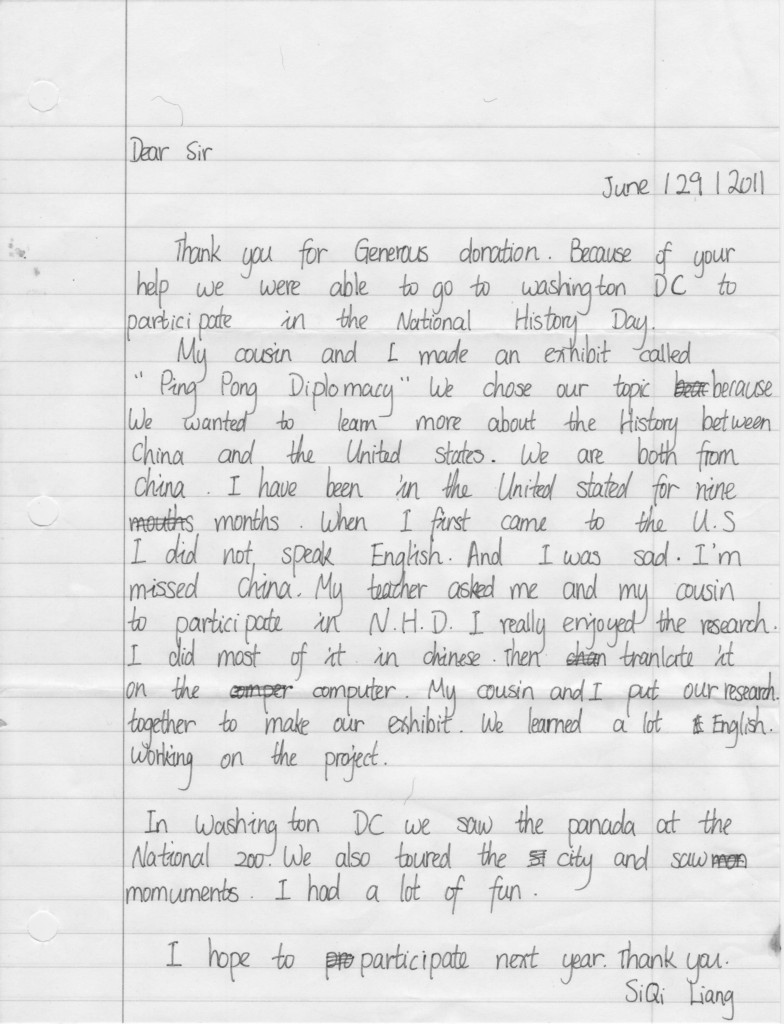ESL Students Excel at National History Day Contest

Last year’s “Outstanding Louisiana Entry” award at the National History Day Contest went to students from the English as Second Language program at John Quincy Adams Middle School in Metairie, LA. All of us at the Museum were inspired by the story of the three young ladies who won this award. Each of them had been born in China and came to the New Orleans area with family members who own and operate several restaurants. One of the students had been in Louisiana for less than 6 months when she registered for the New Orleans Regional History Day Contest. According to their teacher, this particular student began the year very shy and kept her head down for the first month of the school year. She began to become more involved when given the opportunity to create a project that could help her find the connections between her old country and her new home. She partnered with the other two students to research President Nixon’s visit to China in 1972.
The group decided to develop an exhibit called “Ping Pong Diplomacy.” All student-created text was required to be in English, as was their process paper and bibliography. Additionally, the interview with the judges would be in English, though they could bring a translator if they wished. The student who had been in the United States the longest was able to serve as a translator for the group during the interview. The language barrier proved not to be a hindrance, and their project finished first at the regional contest in the junior group exhibit category, allowing them to return to the Museum for the State Contest in April. The group was determined to finish in the top two at the State Contest and set out to improve their project for the next round of competition. They worked on their English, revised their written materials, and revamped their exhibit board. On their second visit to the Museum, they felt extremely prepared.

Faced with competition from all over Louisiana, the group grew nervous. They were second-guessing their answers to questions from the judges and worried that the judges may have misconstrued some of their words. As I prepared to announce the winners, I noticed their tense, nervous looks. When they heard their names announced as national qualifiers in junior group exhibit, their nervous looks turned to large smiles. With a little prodding, they came to the stage to accept their awards and shake hands with National History Day Executive Director Cathy Gorn. After the contest, their teacher dropped them off at their family’s restaurant where their exhibit was promptly displayed on a table in the center of the dining room.
The group was not satisfied with just advancing to the National Contest; they wanted to make their project even better for the highest level of competition. They called family members and former teachers in China. They found documents about Nixon’s visit in Chinese. They took all of the feedback from judges in the previous two rounds and incorporated as much of that assistance as possible. They booked their tickets to Washington, D.C., and prepared to have their project reviewed by a national audience at the University of Maryland.

The National History Day Contest takes place over five days in mid-June. In addition to displaying and defending their projects, students are able to tour the nation’s capitol, attend special events at the National Museum of American History, and interact with other students from all 50 states and several territories. Only two of the students from Adams Middle could attend. The other was scheduled to attend a family event in China that same week. The two students who did attend made the most of their visit as they collected buttons from all 55 National History Day affiliates, visited the National Zoo to see the pandas, and, of course, defended their project to a panel of expert judges.
The competition at the National Contest is very intense. Only the top two projects per category advance from each state or territory. This means that of the tens of thousands of group exhibits that are submitted to contests each year, only around 100 of them will make it to this level. After the Adams Middle School students set up their exhibit, they noticed that there were two other exhibits on Nixon’s trip to China in the exhibit room. Based on appearances, they did not feel they would beat the other two and began talking about next year.
The project was set up on Sunday night, and judging began Monday morning. The students met their judges and discussed the role that their heritage had in selecting their topic. They answered questions about Nixon, ping pong, and China’s Cultural Revolution. They felt knowledgeable about their topic, and couldn’t wait to tell the story of the pandas given to President Nixon as a gift. The interview ended with the students feeling a little more confident about their project. After the interview, they embarked on three days of sightseeing and socializing.

The National History Day Award Ceremony took place on Thursday morning. All students, parents, and teachers gathered in the Cole Field House at the University of Maryland to hear the winners. The morning began with a “Parade of States” that involved students waving flags and banners, and carrying items representative of their home states. After the parade, the announcement of the awards began. Through the ceremony, all of the students from Louisiana sat and waited while the top three in each category were recognized. When it came time for the awards for Junior Group Exhibit, the students from Adams Middle School did not hear their names called. They did not finish in the top three in the nation.
National History Day also sets up awards for the top performers from each affiliate. The announcement of these awards came soon after the Junior Group Exhibit awards, and, this time, the students from Adams Middle were called. They had earned the distinction of having the best entry from any student in Louisiana regardless of category. When the final results were published, the girls had finished 3rd out of 14 projects in the preliminary round. They had missed the cutoff for the final round by only one place. With seven preliminary rounds, their prelim finish meant that they had created one of the top twenty overall exhibits among middle school students in the country.
They had gone from being shy and feeling isolated to receiving an award at the highest level of a national research competition in the span of one school year. Their showing and the quality of their work has prompted me to reach out to organizations like LaTESOL, an organization for teachers in Louisiana who teach English to speakers of other languages, to bring the program to more students. National History Day Contests are open to students from all backgrounds and can be a life-changing event. As the program in Louisiana grows, it is the Museum’s hope that all students have the opportunity to participate.
Below is a letter written by one of these students to the Museum’s generous donors whose contributions helped make her trip to the National History Day Contest possible.

This post by Louisiana History Day Coordinator Nathan Huegen.
- Posted :
- Post Category :
- Tags :
- Follow responses to this entry through the RSS 2.0 feed. You can skip to the end and leave a response. Pinging is currently not allowed.




Leave a Reply